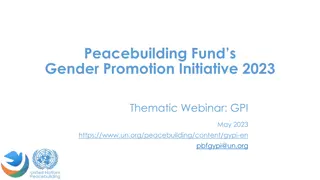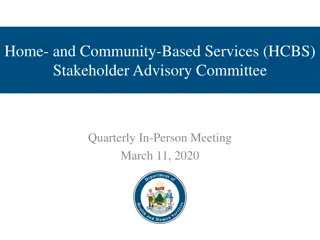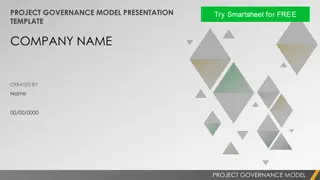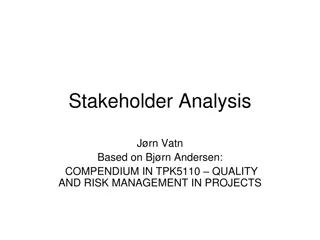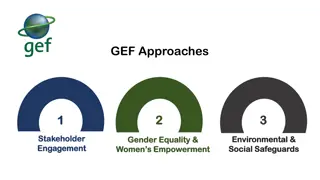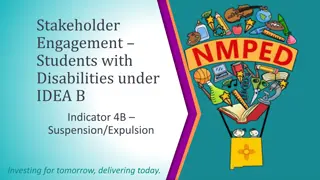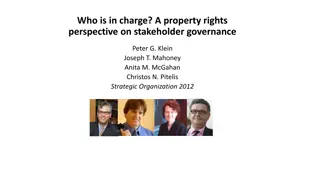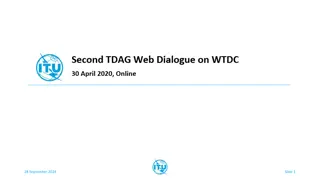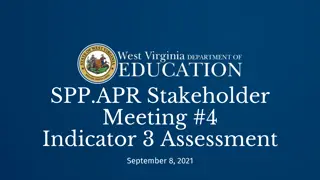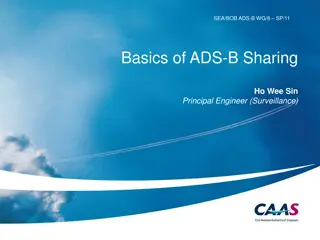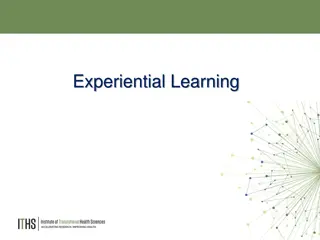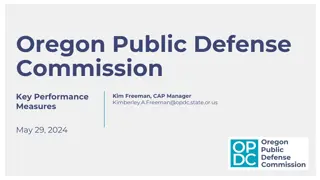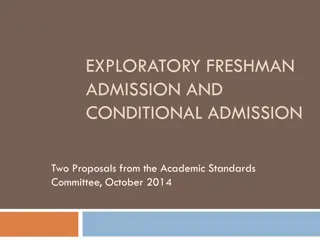ANSP Stakeholder View on RP3 Performance Plan and Target Proposals
Stakeholder insights on RP3 performance plan and target proposals highlight challenges faced in meeting RP2 targets, such as lack of consideration for interdependencies and local circumstances. Observations on traffic evolution, forecast, and volatility in FABEC region are discussed, emphasizing the need for improved coordination and capacity management. Analysis of traffic and delay interdependency at Karlsruhe ACC underlines the impact of approaching capacity limits on delay metrics.
Download Presentation

Please find below an Image/Link to download the presentation.
The content on the website is provided AS IS for your information and personal use only. It may not be sold, licensed, or shared on other websites without obtaining consent from the author.If you encounter any issues during the download, it is possible that the publisher has removed the file from their server.
You are allowed to download the files provided on this website for personal or commercial use, subject to the condition that they are used lawfully. All files are the property of their respective owners.
The content on the website is provided AS IS for your information and personal use only. It may not be sold, licensed, or shared on other websites without obtaining consent from the author.
E N D
Presentation Transcript
ANSP Stakeholder View on RP3 Performance Plan and Target Proposals FABEC RP3 User Consultation Luxembourg, 5 September 2019 Thomas Hellbach, AFG/PMG
Learning from RP2 for RP3 - Observations Root cause for missing the targets for RP2: The EU-wide Targets were calculated as theoretical economic optimum between cost of delay and costs for capacity. They were broken down to become the RP2 Reference values, which were enforced as pure top-down FAB/national targets. Interdependencies across KPAs, the real influence of ANSPs on the indicators and local circumstances were not taken into account. Targets were set firmly for 5 years assuming a sufficient accuracy of the forecasts. Root causes for the ADM/HFE-indicator performance in RP2: Deterioration of Delay (En-route Average Delay per Movement) because of Insufficient coordination between the NM, the ANSPs and the AOs on the traffic development (be it long term or from one season to the other) No reliable traffic forecast (magnitude and location) Increased traffic volatility (geopolitical events, better (more dynamic) ad-hoc flight planning) Cost pressure, difficult/impossible to withhold sufficient capacity buffers Stagnation of Horizontal Flight Efficiency (HFE) because of 2018/2019 summer RAD measures to mitigate delay include horizontal re-routings Share of overflights changed Data plot density changed Difference between shortest route (measured) and cheapest route (flown) 2 FABEC Consultation - 05/09/2019 - ANSP View
FABEC Traffic Evolution and Forecast FABEC IFR Movements Traffic Forecast (based on February STATFOR forecast release) 7300 IFR Movements (thousands) 6800 6300 5800 5300 2008 2009 2010 2011 2012 2013 2014 2015 2016 2017 Year 2018 2019 2020 2021 2022 2023 2024 2025 2011 High Forecast 2011 Base Forecast 2011 Low Forecast 2013 High Forecast 2013 Base Forecast 2013 Low Forecast 2015 High Forecast 2015 Base Forecast 2015 Low Forecast 2017 High Forecast 2017 Base Forecast 2017 Low Forecast 2019 High Forecast 2019 Base Forecast 2019 Low Forecast Actual traffic 3 FABEC Consultation - 05/09/2019 - ANSP View
FABEC Volatility Volatility can have numerous facets: Above one example of Maastricht ACC that show how even usually good delay performers had to struggle in RP2 with the volatility challenges of shifting traffic demand. The problems prevail, regularly consume present staff buffers and are in particular striking at those ACCs operating at the edge of traffic saturation like Karlsruhe and Marseille. 4 FABEC Consultation - 05/09/2019 - ANSP View
Interdependency of Traffic and Delay per Day Daily Traffic & Daily Delay This example of Karlsruhe ACC in 2018 shows that as soon as the traffic approaches the capacity limit of an ACC, the delay develops exponential. Considering all the days/flights with no or less delay shows that the Capacity provided is not adequately measured by the indicator ATFM delay. 5 FABEC Consultation - 05/09/2019 - ANSP View
Interdependency of Delay and Flight Efficiency The chart above shows the correlation between HFE and Delay. Targets equally demanding on capacity and HFE are in contradiction and need to be set considering this interdependency. 6 FABEC Consultation - 05/09/2019 - ANSP View
Impact by eNM2019 measures May 2018 May 2019 57 2019 Number of Flights 11 2018 Entry Time of Day The 4 ACC +NM initiative in 2018 and the eNM 2019 summer measures optimise the utilisation of available capacity by altering the trajectory to less crowded areas or FLs. If there is a horizontal component involved usually the route becomes longer and therefore has a negative impact on the horizontal flight efficiency as can be seen in the two picture above. 7 FABEC Consultation - 05/09/2019 - ANSP View
Conclusion of FABEC ANSP View FABEC ANSPs consider the selection of indicators and the incentive scheme prescribed by the regulation as not innovative enough when compared to RP2, and considering the numerous interdependencies within operations, as too one-sided with regards to the stakeholders addressed. We consider the methodology used to define reference values as misleading concerning the magnitude of the real performance gains that can be exploited. We strongly support the consideration of local circumstances in the approval process to justify adapted targets as described in the RP3 Performance Regulation (EU) 2019/317 and referred to by EU COM in the context of the EU target setting process. 8 FABEC Consultation - 05/09/2019 - ANSP View
Conclusion on RP3 Performance Plan and Targets ANSPs support the proposed Safety Targets. ANSPs consider the proposed en-route delay targets to be at the edge of achievability and thus as very ambitious. Only when all planned improvements and assumptions play out as expected or better, the proposed targets are achievable. ANSPs support the incentive scheme as proposed in the draft FABEC performance plan. ANSPs consider the targets for the HFE indicator, in particular for the last two years of RP3, as not achievable, because the capacity optimization measures will override any ANSP effort to improve HFE. Furthermore, ANSPs are unable to forecast the huge influence by factors outside their control (share of overflights; shortest/cheapest route difference). Targets equally demanding on capacity and HFE are in contradiction and need to be set considering this interdependency. 9 FABEC Consultation - 05/09/2019 - ANSP View
Thank you for your attention!
Capacity Enhancement Measures Launched ACCs and NM collaboration to optimise capacity utilisation across borders Accelerate development and implementation of new ATS tools and systems All 14 ACCs started a capacity benchmarking Launched FABEC Volatility TF Increased cooperation with neighbouring FABs, Airlines and MET-services Recruiting campaigns at all ANSPs Requalification of administrative staff Several staff roster optimisation initiatives Overtime and financial incentives to increase flexibility Launched initiatives to enlarge sector groups and foster cross-training Re-sectorisation/Airspace re-design/considering additional vertical layers New routings to alleviate capacity bottlenecks Optimising RAD Restrictions foster FPL adherence for capacity provision and ease of use ATFCM measures to optimize the usage of capacity Many more 12 FABEC Consultation - 05/09/2019 - ANSP View


